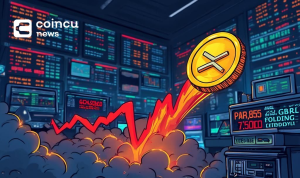According to Coinbase’s most recent monthly report, long-term bitcoin investors have not sold their holdings despite market volatility because short-term speculators are mostly to blame for the significant selling that is accelerating the asset’s decline.

The report, titled “The Elusive Bottom,” examined the state of the market as a whole in June as the leading cryptocurrency showed indicators that it was approaching the bottom. On-chain data showed that, despite a little decline from the 80% recorded at the start of the year, holders who had owned bitcoin for more than six months still made up 77% of the 21 million bitcoins ever available to be mined.
The fact that the percentage of long-term holders’ ownership above the 60% mark at the height of the previous cycle in December 2017 showed the asset’s relative strength. According to the paper, this tendency is a sign that true believers are less inclined to intensify the selling pressure during tumultuous times.
Notably, the ongoing bloodbath has been mostly fueled by rate hikes pushed by the Fed, overly leveraged crypto companies, and miners being compelled to sell their holdings when their collateral that had lost value was in danger of being liquidated.
According to the research, CeFi lenders significantly raised their short-term loans during the bull market. They borrowed a significant amount of money via DeFi protocols and then lent the money to counterparties who offered even greater interest rates. Some counterparties who lent money to cryptocurrency hedge funds and other organizations had “duration mismatches and heavy rehypothecation of assets in their books.”

A greater contagion effect immediately swept throughout the market as the snowball continued to grow until the abrupt correction hit the market. The liquidity crunch that led to margin calls or outright recalls on certain of the loans was primarily caused by OTC trading desks in particular.
“Those OTC desks tend to expand their balance sheets and facilitate trades by borrowing uncollateralized to try and maximize their capital efficiency. Such uncollateralized loans would be made on the basis of these OTC desks’ on-chain and off-chain credit data. Nevertheless, when these loans are repriced or recalled, the desks are forced to show their clients wider bid-ask spreads or smaller trade sizes.”
Publicly traded miners who had taken large loans secured by bitcoin holdings or mining equipment during the bull market were forced to sell their positions amid declining asset prices, adding to the ongoing credit crisis. The top 28 publicly traded mining firms barely account for 20% of bitcoin’s hashrate, thus their sales won’t have a significant impact on trading volume.
Investors frequently pull money out of DeFi protocols in order to pursue higher yields in traditional finance in the light of the Fed’s commitment to raising rates in order to combat excessive inflation. The impact can be seen in the decrease in stablecoin market capitalization, which went from $162 billion in early May to $149 billion at the end of June.
Due to the pursuit of a higher income, $12.6 billion in capital may have left the cryptocurrency ecosystem. Given that the CPI index for June was 9.1%, which was far higher than what Wall Street anticipated, the Fed is projected to follow up with another 0.75% raise this month. Stablecoin outflow is anticipated to increase as a result.
DISCLAIMER: The Information on this website is provided as general market commentary and does not constitute investment advice. We encourage you to do your own research before investing.
Join CoinCu Telegram to keep track of news: https://t.me/coincunews
Follow CoinCu Youtube Channel | Follow CoinCu Facebook page
Patrick
CoinCu News























